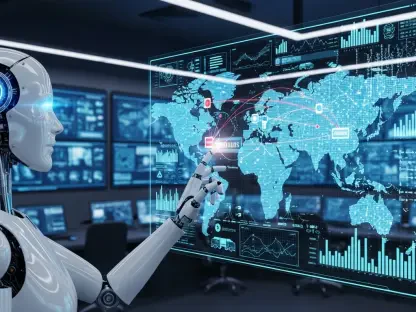The surge of e-commerce, with giants like Amazon at the helm, has ushered in an era where convenience and choice are paramount. This digital surge, however, hasn’t diminished the significance of brick-and-mortar stores; rather, it has prompted their transformation. Today, retailers are innovating to fuse the tangible appeal of physical shopping with the streamlined ease of online platforms, crafting a hybrid retail experience. This new shopping paradigm caters to a consumer base that values both the hands-on engagement of in-store visits and the efficiency of digital transactions. As retail continues to adapt, the intersection of physical and digital spheres is creating an integrated, enriched consumer journey that speaks to the evolving expectations of shoppers in this interconnected landscape.
The Sensory Appeal of Physical Stores
Physical stores have a unique quality that online shopping platforms can’t match—the sensory experience. The tactile act of handling merchandise, the stimulating visuals of creative displays, and the ability to instantly gratify one’s need by purchasing and walking out with a product cannot be replicated by digital means. Customers value these experiences and the human touch that comes with personalized service from attentive and knowledgeable staff. Studies show that the emotional connection developed through these interactions can lead to higher customer satisfaction and loyalty. Retailers that recognize the inherent value in these sensory interactions are better positioned to create meaningful relationships with their clientele, fostering a connection that goes beyond the transactional nature of shopping.
Embracing Experiential Retail
As the online commerce landscape grows, visionary retailers are evolving their shops into interactive spaces, going beyond traditional sales functions. This approach, known as experiential retail, seeks to captivate shoppers through engaging and memorable activities. An illustrative example is the advent of 3D holographic displays, such as those created through a partnership between HYPERVSN and luxury retailer Harrods. These cutting-edge technologies are not merely tools for drawing the eye; they’re reshaping what it means to go shopping by turning it into an interactive event. Through such strategies, stores enjoy increased visitors and deepen their brand identity, establishing the in-person shopping experience as a crucial touchpoint in the consumer’s path. This transition underlines the importance of integrating novelty and interactivity in maintaining relevance in a rapidly digitizing economy.
Catering to the Modern Shopper
Understanding the contemporary shopper’s mentality is key to retail success. The modern consumer, particularly the younger generations, craves experiences that are engaging and shareable on social media. Physical stores that have pivoted to become hubs for lifestyle-centric activities are reaping the rewards. They’ve become spaces where learning, socializing, and experiencing are just as important as the act of purchasing. Workshops, classes, and interactive events tailored to specific interests create a sense of community and belonging, fostering return visits and word-of-mouth advocacy. In these ways, physical stores become much more than just a place to buy goods—they become a central part of the consumer’s lifestyle and identity.
Integrating Omnichannel Strategies
The retail industry is undergoing a transformation with the advent of the omnichannel approach, which merges the convenience of online shopping with the tangibility of physical stores. This synergy creates a unified customer experience, maintaining a brand’s essence across all touchpoints. Retailers leveraging this strategy, such as Sephora with its online makeup trials and Nike’s exclusive member benefits, showcase how blending virtual and physical spaces enhances customer engagement by offering tailored interactions. This reshaping of retail necessitates investment into omnichannel strategies to meet the modern consumer’s expectation of a flexible, anytime-anywhere shopping journey. As retail evolves, only those who adapt to this integrated model can thrive in a market where an all-encompassing shopping experience is no longer a perk, but a fundamental demand.
Leveraging Technology in Brick-and-Mortar
In today’s retail environment, incorporating technology into a brick-and-mortar setting is not just an advantage but a necessity. By harnessing tools like augmented reality, mobile apps for personalized promotions, and data analytics for tailored in-store experiences, retailers can create a high-tech, high-touch point of sale that delights the digital-savvy consumer. Keeping at the forefront of technological trends enables retailers to offer unique and customized experiences, making stores more relevant and engaging in an age where digital storefronts are only a click away.
Ensuring a Future for Physical Retail
To prosper amidst the digital shopping era, brick-and-mortar stores must transform, offering more than goods; they must be places of engagement and experience. Retail must evolve from mere transactions to creating spaces where customers form emotional bonds with brands, which can lead to community growth and heightened loyalty. This new retail concept goes beyond commerce alone, forging memorable connections that online platforms can’t replicate.The retail of the future blends tactile in-store encounters with online convenience, catering to the diverse needs of today’s shoppers. Innovating the shopping journey in this way gives physical stores a strong foundation for the changing landscapes of retail. With these strategies, physical retail has the potential to flourish, intertwining the hands-on allure of in-store shopping with the digital world’s practicality.








